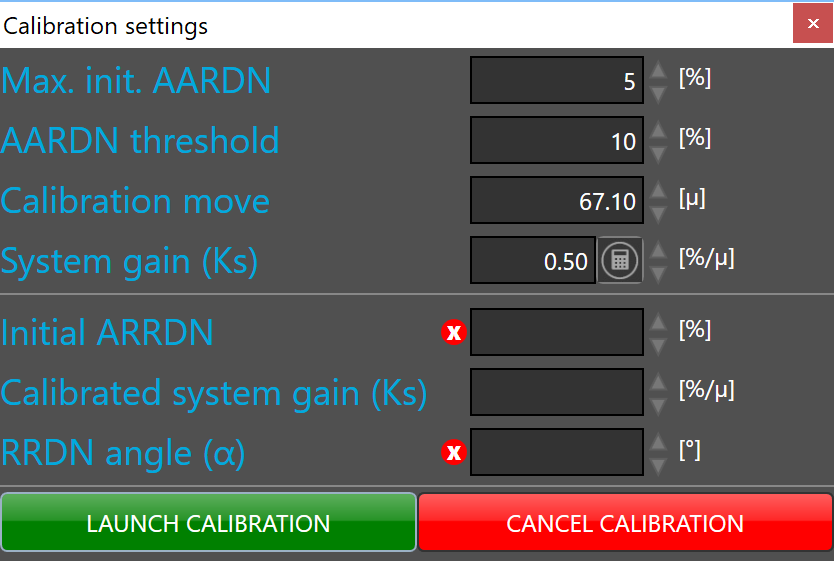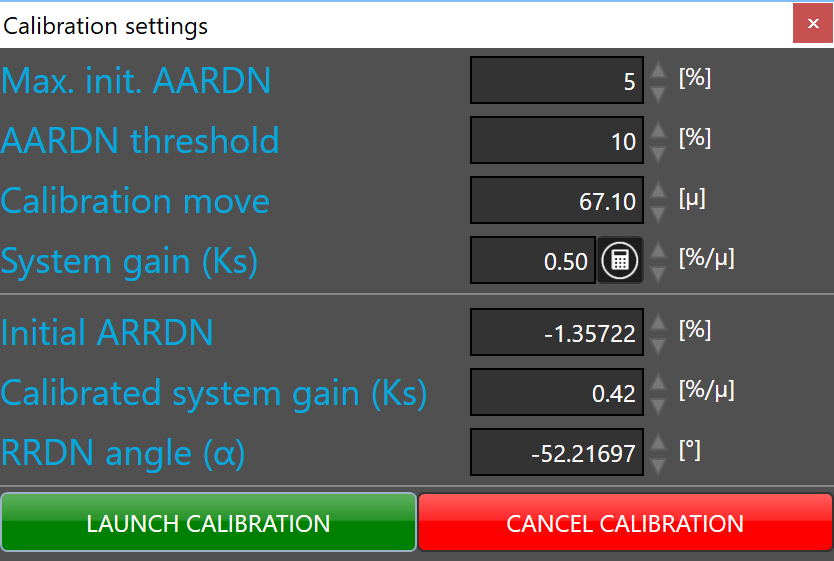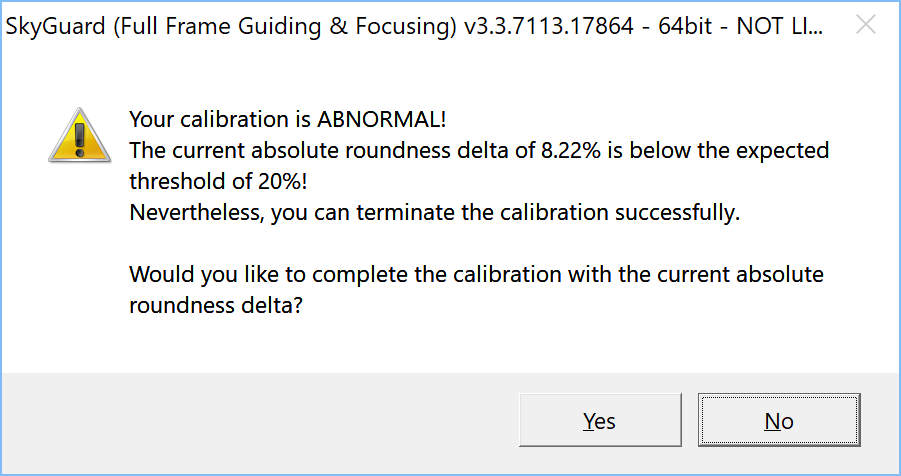Focuser calibration
![]() Not available nor applicable with SkyGuide
Not available nor applicable with SkyGuide
 Before doing the focuser calibration, the ONAG focuser must be adjusted.
Before doing the focuser calibration, the ONAG focuser must be adjusted.
To start calibration, click the  button.
button.
We recommend to do all the KSG calibration using a bright (yet below clipping) single star in the guider FOV.
 If focusing is in progress when focuser calibration button is pressed, all focusing operations are immediately stopped. To restart focusing, just click on the start focusing button.
If focusing is in progress when focuser calibration button is pressed, all focusing operations are immediately stopped. To restart focusing, just click on the start focusing button.
 Focuser calibration is very important to get optimal focusing performance. Please take adequate time to follow the recommendations as closely as possible to take full benefit of full frame guiding:
Focuser calibration is very important to get optimal focusing performance. Please take adequate time to follow the recommendations as closely as possible to take full benefit of full frame guiding:
1. Calibration should be done in relative good seeing conditions when possible.
2. Point your telescope near the zenith and search for a bright (yet below clipping) single star, if possible, in the guider FOV. More than one star in the guider FOV for the calibration is not recommended.
4. The imaging and guider cameras should be at best focus, review the proper procedure.
5. Adjust the guiding camera exposure time for good SNR, yet stay below the chip saturation level. Try to use a single star.
6. Adjust the focuser calibration move (in micron) only if needed. SKG computes it from the instrument set data automatically to match the CFZ.
 If the focuser did not move, it's useless to go to far with the calibration move, most of the time when the focuser do not move the focuser relay is the source of the problem. Using the SKG manual focuser buttons can help to determine if there focuser is actually under control of SKG.
If the focuser did not move, it's useless to go to far with the calibration move, most of the time when the focuser do not move the focuser relay is the source of the problem. Using the SKG manual focuser buttons can help to determine if there focuser is actually under control of SKG.


The initial average relative roundness (ARRDN), the relative roundness angle and the calibrated system gain values are automatically calculated during the focuser calibration.
 When the focuser has never been calibrated for the selected instrument, the calibration fields are empty.
When the focuser has never been calibrated for the selected instrument, the calibration fields are empty.
The maximum initial average absolute roundness (AARDN) is set by default at 5% and the AARDN threshold at 10%.
This threshold is added to the current absolute roundness, if it is not excited during the calibration SKG will issue a calibration warning message.
The user has the opportunity to ignore such warning and to validate the calibration anyway, see below.
However we recommend that the average absolute roundness increase by at least 5% above its current value, 10% would be optimal.
 The default values works for major setups, but you can adjust them if needed.
The default values works for major setups, but you can adjust them if needed.
Once your are ready to calibrate just click  button.
button.
Be patient, SKG will compute an average absolute roundness based on many guider frames for mitigating the seeing, this may take some time.
 New calibration will overwrite the existing calibration data.
New calibration will overwrite the existing calibration data.
If the calibration is abnormal because the AARDN is below the defined threshold, the following message will be displayed

You could accept or do the following:
1. Increase the focuser calibration move
2. Reduce the average absolute roundness threshold (AARDN)
 Fix the problems and restart focuser calibration.
Fix the problems and restart focuser calibration.
 Focuser remain calibrated unless the guider camera is unmounted from the optical train or rotated. If this happen, a new calibration is required.
Focuser remain calibrated unless the guider camera is unmounted from the optical train or rotated. If this happen, a new calibration is required.
 Successful calibration will be confirmed by a message box. After successful calibration auto-focusing can be started.
Successful calibration will be confirmed by a message box. After successful calibration auto-focusing can be started.